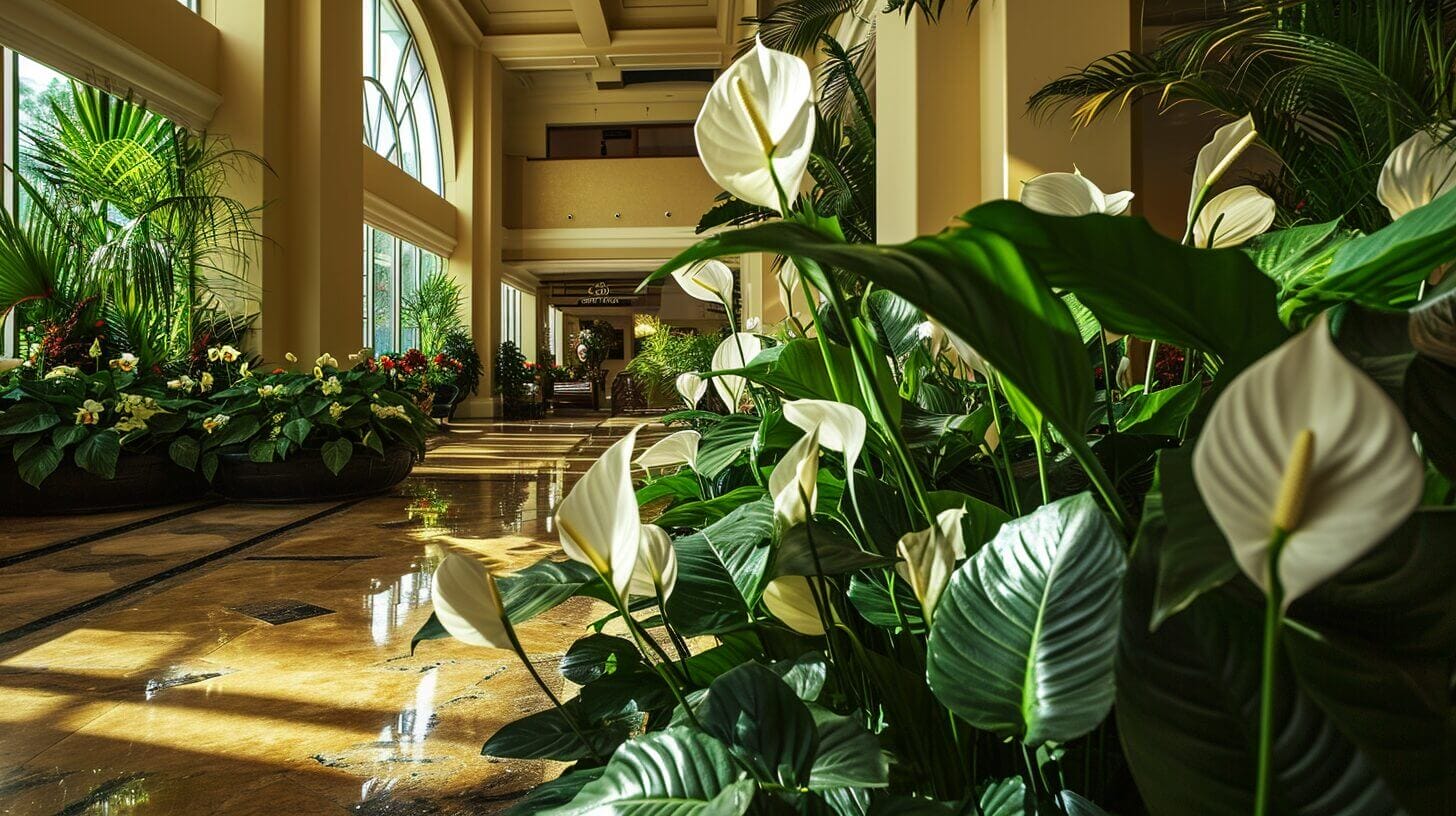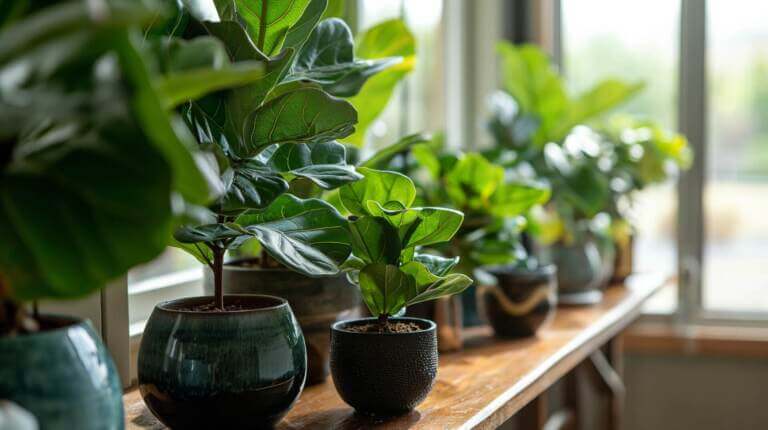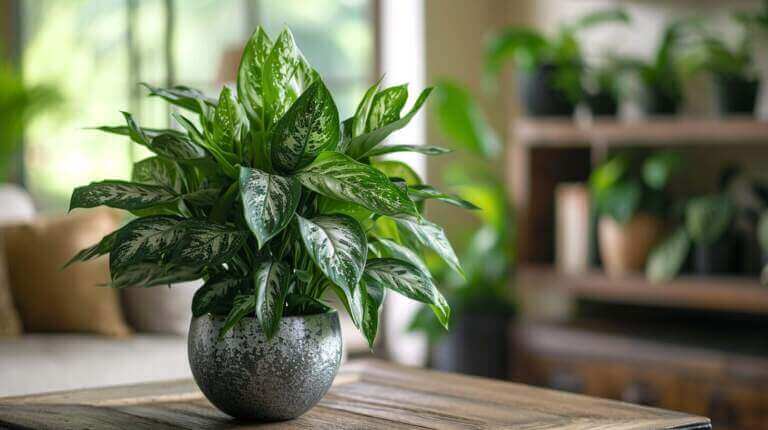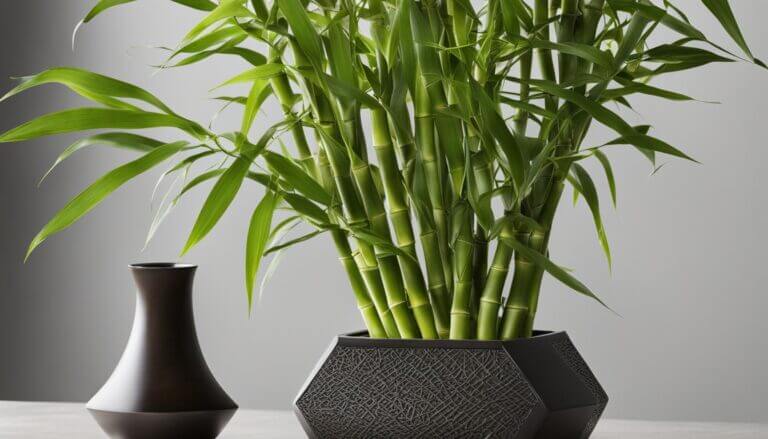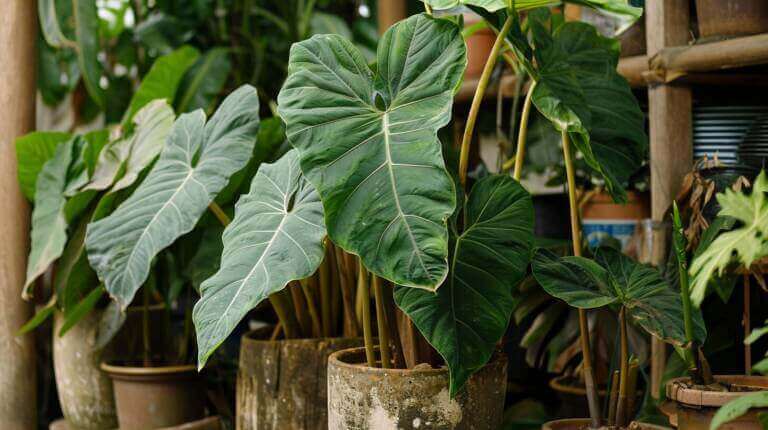How Big Do Peace Lily Plant Get? Peace Lily Plants Care To Maxized Growth Size
Key Takeaways
- Bright, indirect light and temperatures between 65-85°F (18-29°C) are preferred for maximum peace lily growth.
- Proper care and attention, including regular watering and checking soil moisture, are required for healthy growth.
- Overwatering can lead to root rot, while underwatering can cause the plant to wilt.
- Maintaining appropriate humidity levels is crucial for preventing browning and drying of leaves and promoting healthy growth.
Factors Affecting Peace Lily Care
The growth rate of peace lilies can be significantly influenced by factors such as light intensity, temperature, and soil moisture levels. These factors play a crucial role in determining the overall health and size of the plant.
Light intensity is an essential factor to grow and care for peace lilies. These plants thrive in bright, indirect light. Insufficient light can lead to weak and spindly growth, while excessive light can cause sunburn and leaf damage. Ensuring the right amount of light is provided is crucial for optimal growth.
Temperature also plays a significant role in peace lily growth. These plants prefer temperatures between 65°F and 85°F (18°C to 29°C). Extreme temperatures can stunt growth and affect the overall health of the plant. It is important to keep peace lilies away from drafts or areas with fluctuating temperatures.
Soil moisture levels are vital for root development in peace lilies. These plants prefer moist but not waterlogged soil. Overwatering can lead to root rot, while underwatering can cause the plant to wilt. Regularly checking the soil moisture and adjusting watering accordingly is crucial for healthy growth.
Understanding Peace Lily Plant Care Growth Patterns
During the process of understanding peace lily growth patterns, it is important to closely observe and analyze the plant’s development stages and the factors influencing its growth. Peace lilies, known for their beautiful peace lily flowers and dark green foliage, require proper care and attention to thrive and reach their maximum growth size.
Here are some key points to consider:
- Peace lily care: Providing the right environment is crucial for the healthy growth of peace lilies. They prefer bright, indirect light and thrive in temperatures between 65-85°F (18-29°C). It is important to keep the soil moist but not overly saturated, as overwatering can lead to root rot. Regular fertilization with a balanced houseplant fertilizer will also help promote growth.
- Peace lily propagation: Peace lilies can be propagated through division or by taking stem cuttings. Division involves separating the plant into smaller sections, ensuring each division has roots and leaves. Stem cuttings can be taken from the mother plant and placed in water or moist soil until they develop roots. Both methods require patience and care to ensure successful propagation.
Understanding peace lily growth patterns allows plant enthusiasts to provide the optimal conditions for their plants to thrive. By following proper care for peace lily plant care and exploring various propagation methods, individuals can enjoy the beauty and benefits of these graceful plants in their homes or offices.
Ideal Conditions for Maximum Peace Lily Growth
To achieve maximum peace lily growth, maintaining an optimal temperature range and providing bright, indirect light are essential factors.
Peace lilies thrive in temperatures between 65-85°F (18-29°C), making them ideal for indoor environments. Exposure to extreme temperatures can negatively impact their growth and may cause damage to the leaves and flowers.
In terms of lighting, peace lilies prefer bright, indirect light. Placing them near a north or east-facing window is ideal as it provides the right amount of sunlight without direct exposure. Direct sunlight can scorch the leaves, while insufficient light can result in weak growth and smaller blooms. If the lighting conditions in your home are not sufficient, you can supplement with artificial grow lights to ensure optimal growth.
When it comes to watering techniques, peace lilies prefer slightly moist soil. Overwatering can lead to root rot, while underwatering can cause the leaves to wilt and turn yellow. A good practice is to water the plant when the top inch of soil feels dry to the touch. It is important to ensure proper drainage hole to prevent waterlogging.
Tips for Promoting Healthy Peace Lily Growth
Properly adjusting the lighting and temperature in your indoor environment, as well as implementing a consistent watering schedule, are crucial for promoting healthy peace lily growth. To ensure optimal conditions for your peace lily, consider the following tips:
- Provide bright, indirect light: Place your peace lily near a window with filtered sunlight or use artificial grow lights to mimic natural light conditions.
- Maintain moderate temperatures: Peace lilies thrive in temperatures between 65-80°F (18-27°C), so avoid exposing them to extreme cold or hot environments.
- Keep the soil moist but not soggy: Water your peace lily regularly, allowing the top inch of soil to dry out before watering again. Avoid overwatering, as it can lead to root rot.
In addition to these basic care practices, it is important to meet the fertilizer requirements and use proper watering techniques for optimal growth. Fertilize your peace lily every 2-4 weeks during the growing season using a balanced, water-soluble fertilizer. Dilute the fertilizer to half strength to avoid burning the plant’s roots.
Common Challenges in Peace Lily Growth
One of the most common challenges in peace lily growth is maintaining the appropriate level of humidity, as it can greatly impact the plant’s overall health and development. Peace lilies are native to tropical rainforests, where humidity levels are high. Therefore, replicating this environment is crucial for their success as houseplants.
One of the main issues that arise from low humidity levels is the browning and drying of the plant’s leaves. To combat this, there are several troubleshooting tips that can be implemented. Firstly, misting the leaves regularly can help increase the humidity around the plant. Placing the pot on a tray filled with water and pebbles can also provide a humid microclimate. Another option is to use a humidifier in the room where the peace lily is located.
On the other hand, excessive humidity can lead to problems such as root rot and fungal diseases. To prevent this, it is essential to allow the soil to dry slightly between waterings and provide adequate drainage for the plant.
Frequently Asked Questions
Do Peace Lily Plants Require a Certain Amount of Sunlight to Reach Their Maximum Growth Size?
Sunlight requirements for peace lilies vary, but they generally thrive in shaded areas with indirect light. While they can handle low light conditions, providing them with bright, indirect sunlight will help them reach their maximum growth size. Avoid direct sunlight, as it can scorch the leaves and hinder their growth.
Can Peace Lilies Grow Outdoors in Cold Climates?
Peace lilies, known for their beautiful white flowers, can be grown outdoors in cold climates with proper care. Outdoor care for peace lilies involves choosing a sheltered location, protecting the plant from frost, and providing adequate water and light.
While peace lilies are not frost-tolerant, they can survive winter with proper precautions. By following these guidelines, peace lilies can thrive outdoors and bring beauty to gardens in colder regions.
How Long Does It Take for a Peace Lily to Reach Its Maximum Growth Size?
The time it takes for a peace lily to reach its maximum growth size can vary depending on a variety of factors. These factors include the environment in which the plant is grown, the quality of care it receives, and the specific type of peace lily. Generally, peace lilies can take several years to reach their full growth potential.
It is important to provide them with proper lighting, watering, and fertilization to encourage healthy and robust growth.
Can Peace Lilies Tolerate Direct Sunlight?
Optimal lighting conditions for peace lilies:
Finding the perfect balance is crucial for their health. While peace lilies can tolerate some direct sunlight, it is generally recommended to place them in an area with indirect sunlight. Direct sunlight can scorch the leaves of peace lilies and cause damage to their overall health. Providing them with filtered or diffused light will create a more favorable environment for their growth and ensure their well-being.
Can Peace Lilies Grow in Low Light Conditions?
Peace lilies are known for their adaptability and ability to thrive in low light conditions. They are an excellent choice for indoor spaces with limited sunlight. However, it is important to note that while peace lilies can tolerate low light, they still require some amount of indirect light to grow and flourish.
If you are looking for alternative low light plants for your indoor space, consider snake plants, ZZ plants, or pothos. To create a suitable low light environment, ensure proper watering, use artificial lighting if necessary, and avoid placing plants in dark corners.
How Often Should I Repot My Peace Lily to Promote Its Growth?
To promote the growth of your peace lily, it is important to repot it at the right frequency. Repotting your peace lily every 1-2 years is generally recommended. This allows the plant to have enough space for its roots to grow and absorb nutrients efficiently.
Benefits of repotting include providing fresh soil, preventing root bound issues, and promoting overall health and vitality. Regular repotting ensures that your peace lily can continue to thrive and reach its maximum growth potential.
How can I take care of my peace lily plant?
To care for a peace lily plant, it’s important to keep it indoors as it’s an indoor plant. It needs a potting mix that drains well and should be placed in a location with much light but not direct sunlight. The plant prefers a tropical environment and needs to be watered regularly.
How can I make my peace lily bloom?
To make your peace lily bloom, ensure it is getting enough light as peace lilies like bright, indirect light. Also, regular feeding with a balanced plant food can help promote blooming.
What are the different types of peace lilies?
There are several types of peace lilies. Some of the most common include the “Mauna Loa” peace lily, which is known for its large, dark green leaves and the “Wallisii” peace lily, which is a smaller variety with more abundant flowers.
What problems can occur with peace lilies?
Some common problems with peace lilies include yellowing leaves, brown leaf tips, and wilting. These can be caused by factors such as overwatering, under-watering, too much light, or not enough light.
How often should I water my peace lily?
The watering schedule for a peace lily can depend on several factors such as the size of the plant and the conditions in your home. However, a good rule of thumb is to water a peace lily when the top inch of soil feels dry.
How can I propagate my peace lily?
To propagate a peace lily, you can divide the plant during repotting. Simply remove the entire plant from its container and gently separate the roots. Each new section should have at least two or three leaves.
Why is my peace lily not blooming?
If your peace lily isn’t blooming, it could be due to insufficient light or improper watering. Peace lilies prefer indirect light and too much or too little water can affect their ability to bloom.
How big do peace lilies get?
The size of a peace lily can vary based on its type and growing conditions. However, most indoor peace lilies typically grow to about 16 inches in height. Some larger varieties can reach up to 6 feet tall.
What are some common problems with peace lilies?
Some common problems with peace lilies include yellowing leaves, brown leaf tips, and wilting. These can be caused by factors such as overwatering, under-watering, too much light, or not enough light.
What conditions do peace lilies like?
Peace lilies like indirect light and high humidity. They prefer a warm environment and need to be watered regularly. They are generally easy to care for, making them a popular houseplant.

